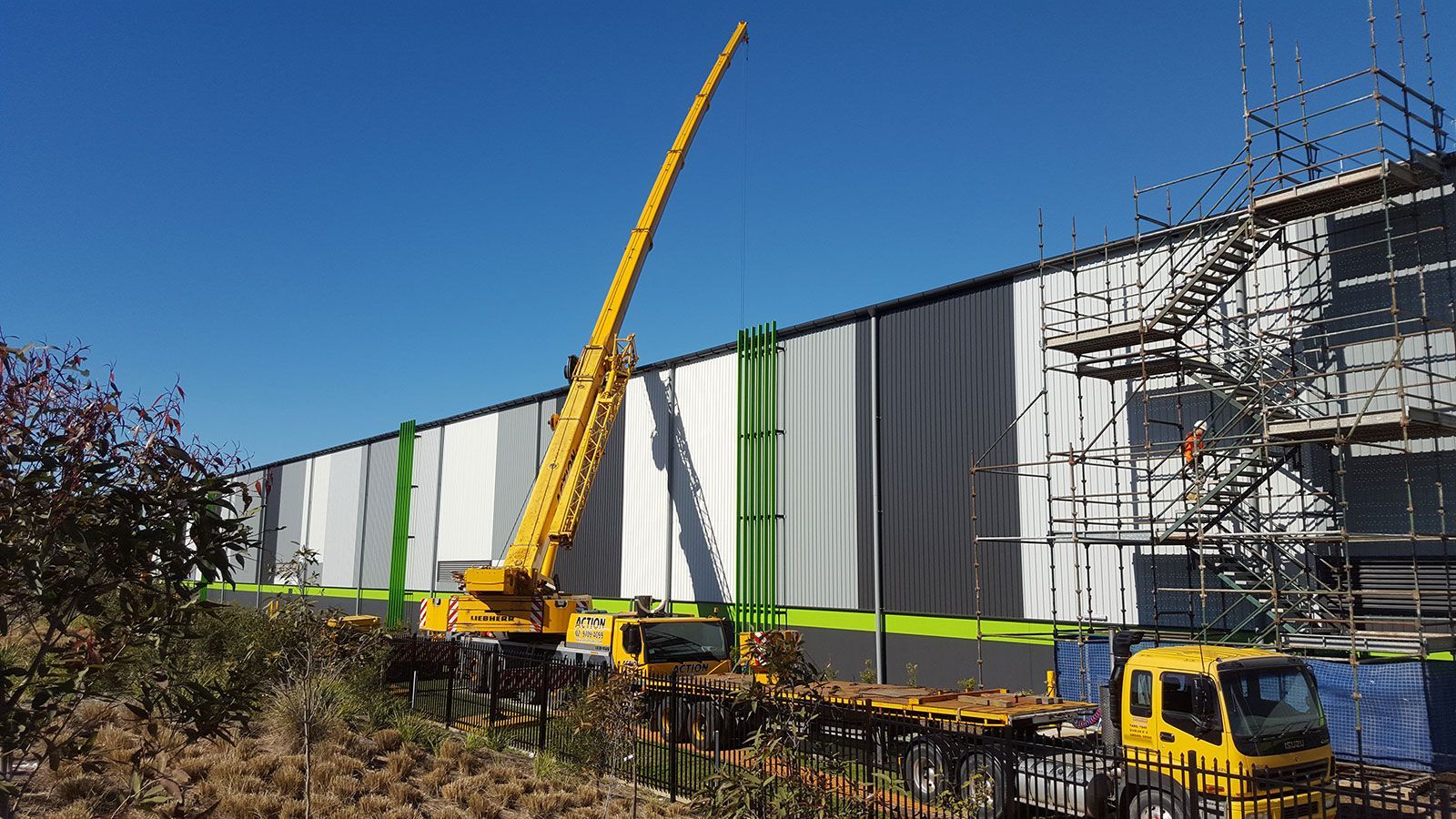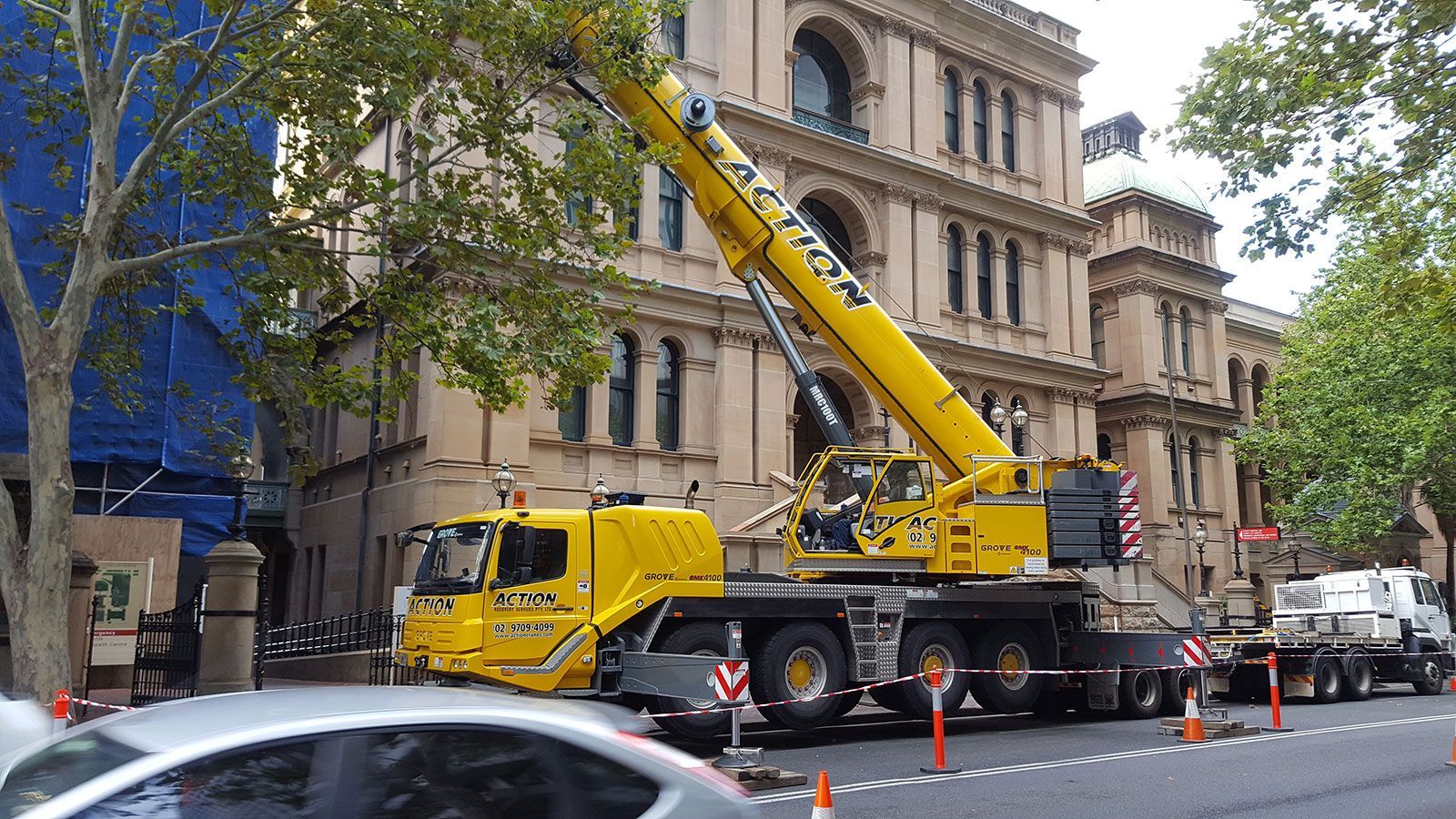An overhead view of the city crane
All types of cranes come with all types of advantages and disadvantages – we’ve gone through plenty of them already. But if you’re looking for the best crane for work within urban construction sites, the city crane is something that should not be overlooked.
The city crane wears its name with pride: it’s the smaller, more agile crane that’s most used in city areas for work on civic and urban projects in which long-term, high-frequency lifting is not a concern. A native inhabitant of the urban jungle, the city crane can be found most commonly on streets, footpaths, by buildings, or in those construction sites with limited access that are nearby the hustle and bustle of municipal activity.
What are the benefits of city cranes?
Mobility
The city crane has become a versatile crane hire solution for a wide range of civil, commercial, and residential construction projects that require extreme manoeuvrability. In the same league as other mobile cranes such as the Franna crane, the city crane boasts all-wheel drive and steering systems that offer a road-worthiness that matches its other mobile siblings, allowing it to travel safely and reliably on urban streets.
Compactness
What separates the city crane from its larger compatriots is its compact size, allowing it to fit into even the smallest of tight-access spaces – like those on city streets, footpaths, alleyways, and other tight-knit urban nooks and crannies.
A regular city crane can boast a telescopic boom of up to 31 metres, as well as a jib of 13 metres, which is shorter than a larger-scale crane, and which means its snug size can be a drawback if you’re needing an extensive reach.
Strength
For such a little piece of equipment, the city crane sure packs an arm. Don’t be fooled by its smaller size and shorter boom length: the city crane is capable of lifting materials of up to 70 tonnes as well as having pick-and-carry functions, making them ideal workers for frequent high-density loads in city and building constructions (and even within buildings if needed).
What are my other options for city building?
City cranes don’t have to be your only option for urban construction. Other cranes can have advantages for specific uses that city cranes might not – which you might still weigh to their disadvantages.
Franna cranes
A true blue Australian icon, the Franna crane has become the by-word for strength and mobility when it comes to mobile cranes. While Frannas are not usually as small as city cranes, and so won’t be able to fit into those narrowest of construction spaces, they are still smaller and more manoeuvrable than their other, larger mobile counterparts.
All-terrain cranes
You wouldn’t use these big guys for small-scale works, but all-terrain cranes can still come with benefits for big city projects. Their rugged tire design and higher-end engine performance gives them a speed advantage for travelling on roads and streets, which is beneficial for operating on multiple sites within a short span of time.
Tower cranes
Tower cranes won’t give you the runaround – in fact, they won’t even move. Tower cranes are for your longer-term urban constructions in which mobility is not a concern. With their fixed position and 360-degree rotation, tower cranes are useful for higher-end construction projects such as buildings or skyscrapers – the sort of thing you wouldn’t need to bother a little city crane for.
Have an uplifting experience – check out the city crane today
If you’ve been left with a burning desire to get a hold of a city crane for your next urban construction project, don’t let another business leave you hanging – go with the best in Sydney crane hire. At Action Cranes, we offer city cranes in 13 tonne, 16 tonne, and 50 tonne varieties for all your municipal needs, so get in touch today and allow us to raise your standards.


